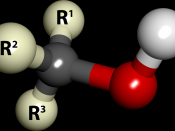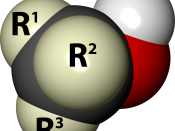Driver EducationWhat is alcohol?Alcohol, as a drug is a depressant not a stimulant, meaning it slows down the central nervous system and thus slowing communications between the brain and the body. It affects concentration, judgment and coordination; it also slows down a personÃÂs reaction time to surprises. These affects can greatly endanger a driver who is under the influence of alcohol cause they might crash the car you know?In chemistry, an alcohol is any organic compound in which a hydroxyl group (-OH) is bound to a carbon atom of an alkyl or substituted alkyl group. The general formula for a simple acyclic alcohol is CnH2n+1OH. In common terms, the word alcohol refers to ethanol, the type of alcohol found in alcoholic beverages.
Ethanol is a colourless, volatile liquid with a mild odor which can be obtained by the fermentation of sugars. (Industrially, it is more commonly obtained by ethylene hydrationÃÂthe reaction of ethylene with water in the presence of phosphoric acid.[1])
Ethanol is the most widely used depressant in the world, and has been for thousands of years. This sense underlies the term alcoholism (addiction to alcohol).
Other alcohols are usually described with a clarifying adjective, as in isopropyl alcohol (propan-2-ol) or wood alcohol (methyl alcohol, or methanol). The suffix -ol appears in the "official" IUPAC chemical name of all alcohols.
There are three major subsets of alcohols: primary (1ð), secondary (2ð) and tertiary (3ð), based upon the number of carbon atoms the C-OH group's carbon (shown in red) is bonded to. Ethanol is a simple 'primary' alcohol. The simplest secondary alcohol is isopropyl alcohol (propan-2-ol), and a simple tertiary alcohol is tert-butyl alcohol (2-methylpropan-2-ol)StatisticsOne in five fatal car accidents in NSW occur as an effect of alcohol. Of these fatalities, 88% are male; 30% occur between the...


